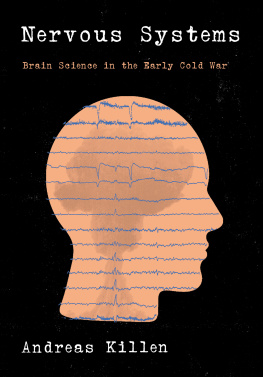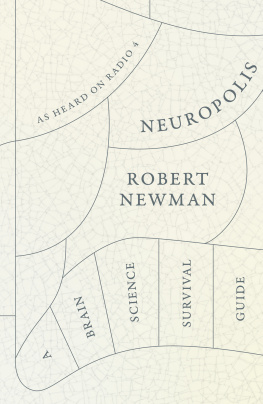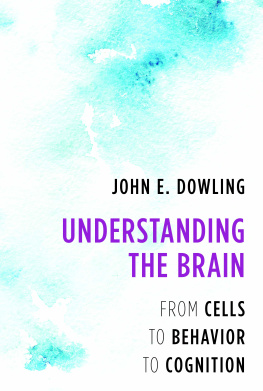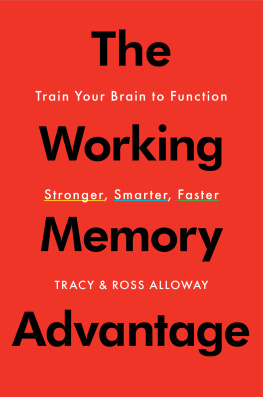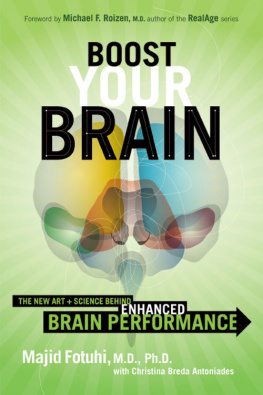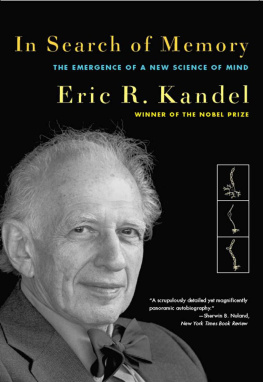Andreas Killen - Nervous Systems: Brain Science in the Early Cold War
Here you can read online Andreas Killen - Nervous Systems: Brain Science in the Early Cold War full text of the book (entire story) in english for free. Download pdf and epub, get meaning, cover and reviews about this ebook. City: New York, year: 2023, publisher: HarperCollins, genre: History. Description of the work, (preface) as well as reviews are available. Best literature library LitArk.com created for fans of good reading and offers a wide selection of genres:
Romance novel
Science fiction
Adventure
Detective
Science
History
Home and family
Prose
Art
Politics
Computer
Non-fiction
Religion
Business
Children
Humor
Choose a favorite category and find really read worthwhile books. Enjoy immersion in the world of imagination, feel the emotions of the characters or learn something new for yourself, make an fascinating discovery.
- Book:Nervous Systems: Brain Science in the Early Cold War
- Author:
- Publisher:HarperCollins
- Genre:
- Year:2023
- City:New York
- Rating:3 / 5
- Favourites:Add to favourites
- Your mark:
Nervous Systems: Brain Science in the Early Cold War: summary, description and annotation
We offer to read an annotation, description, summary or preface (depends on what the author of the book "Nervous Systems: Brain Science in the Early Cold War" wrote himself). If you haven't found the necessary information about the book — write in the comments, we will try to find it.
In this eye-opening chronicle of scientific research on the brain in the early Cold War era, the acclaimed historian Andreas Killen traces the complex circumstances surrounding the genesis of our present-day fascination with this organ.
The 1950s were a transformative, even revolutionary decade in the history of brain science. Using new techniques for probing brain activity and function, researchers in neurosurgery, psychiatry, and psychology achieved dramatic breakthroughs in the treatment of illnesses like epilepsy and schizophrenia, as well as the understanding of such faculties as memory and perception. Memory was the site of particularly startling discoveries. As one researcher wrote to another in the middle of that decade, Memory was the sleeping beauty of the brainand now she is awake. Collectively, these advances prefigured the emergence of the field of neuroscience at the end of the twentieth century.
But the 1950s also marked the beginning of the Cold War and a period of transformative social change across Western society. These developments resulted in unease and paranoia. Mysterious new afflictionsnone more mystifying than brainwashingalso appeared at this time. Faced with the discovery that, as one leading psychiatrist put it, the human personality is not as stable as we often assume, many researchers in the sciences of brain and behavior joined the effort to understand these conditions. They devised ingenious and sometimes transgressive experimental methods for studying and proposing countermeasures to the problem of Communist mind control. Some of these procedures took on a strange life of their own, escaping the confines of the research lab to become part of 1960s counterculture. Much later, in the early 2000s, they resurfaced in the War on Terror.
These stories, often told separately, are brought together by the historian Andreas Killen in this chronicle of the brains mid-twentieth-century emergence as both a new research frontier and an organ whose integrity and capacitiesespecially that of memorywere imagined as uniquely imperiled in the 1950s. Nervous Systems explores the anxious context in which the mid-century sciences of the brain took shape and reveals the deeply ambivalent history that lies behind our contemporary understanding of this organ.
Andreas Killen: author's other books
Who wrote Nervous Systems: Brain Science in the Early Cold War? Find out the surname, the name of the author of the book and a list of all author's works by series.

